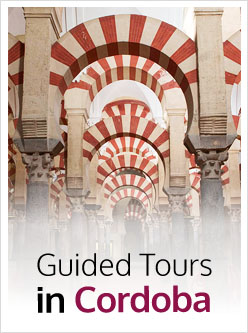Arab Baths of the Caliphal Alcázar (Caliphal Baths)
Islamic authors of the time usually mentioned the number of public baths a city has in order to value its importance. Therefore, it is understandable that Córdoba, which was for a long time the most important city and political capital of Al-Andalus, had a higher number of baths than other Andalusian cities. Thus, in time of Caliph Abd al-Rahman III (912-961), according to chronicler al-Maqqari, there were about three hundred, and in times of Almanzor (976-1002), that number was doubled. A preserved text, Tamagrut’s manuscript, estimates that, in the last quarter of the 11th century, there were 3,701 baths, which could be exaggerated, and 711 in the 12th century.
When studying Islamic baths, historians usually distinguished among Emiral, Caliphal, Almoravids, Almohads, Nasrid or even Mudejar baths, such as the ones built by master builder Maese Mohamed for Monarch Alfonso XI in the Christian Alcázar.
The chronology of the five best preserved Arab baths in Córdoba goes from the 10th to the 14th century. The first of them, the most important and the one we are talking about, is located in the square of Campo Santo de los Mártires, from Caliphal times, commissioned by al-Hakam II (961-976), and it was part of the Andalusian alcazar of Córdoba. This bath had been in use after the collapse of the Caliphate, and it experienced great reforms which altered its original shape in Almoravid (1086-1147) and Almohad times (1147-1213).
As its name indicates, this Arab bath was once part of the Caliphal Alcázar and, probably, as Miguel Muñoz Vázquez tells, it was used as a harem by the Caliph. However, we do not have any inscriptions from Arab chroniclers, telling the details of the life of the building.
We know that the Caliphal Alcázar consisted of four big pavilions. One of them, the closest to the Mosque, which was once the Caliph’s residence, was donated by Fernando III the Saint to the Bishop of Córdoba in 1238. The monarch kept the three remaining pavilions, and the baths were still in use for one more century.
In 1328, King Alfonso XI, who commissioned a new bath to be built for his favourite Leonor de Guzmán in the new Christian Alcázar, the one we know today, buried the Caliphal Baths in order to create a great parade square in that place, which was later called “Campillo del Rey” (Small field of the King). This name was preserved until, in 1588, Ambrosio de Morales erected a monument in honour of the Christian martyrs killed by the Muslims.
DISCOVERY AND VALUE
In 1691, when digging some trenches to lay the foundations of one of the buildings on Campo Santo de los Mártires, they found the remains of the Caliphal Baths three centuries later. At that time, the neighbouring church of San Pedro de Alcántara was being built, a temple which was gradually financed with alms donated by the citizens. Then, the director of the works, Brother Juan de la Encarnación, requested the canonry permission to take from the Muslim site the necessary stone to help the works in the church, because of its slowness, due to economic reasons, as we say. We do not know the canonry’s decision, but we do know that the piece Brother Juan de la Encarnación was interested in, the vault covering one of the rooms, is not preserved.
With the arrival of the 20th century, a new process of constant excavations in the building and surroundings started, but with different purposes and results. In 1903, remains of the bath were found during some local gardening works, and the research was commissioned to Rafael Ramírez de Arellano. He distinguished several rooms, and drew a plan of them, while he discovered and analysed several decorative remains, and dates them back in times of Caliph al-Hakam II.
The baths were covered again until, in 1961, during an excavation campaign aiming at finding funerary remains from Caliphal times, the building appeared again. This time the excavation was led by Félix Hernández and Rafael Castejón, who found exhumed remains from the previous excavation by Rafael Ramírez de Arellano, but in this case, more structures, pottery and plasterwork were found. The study was more detailed and thorough, and it led, a few years later and with the direction of Félix, to the process of declaring it a Cultural Interest Heritage.
Due to the difficulty of making the building suitable for visits and interpretation from a tourist’s point of view, they decided to carry out a museum plan that would allow the visitor to understand not only the structure of the building, but its relevance within the Islamic world. It has been opened to the public since October 2006, with the scheme we show with the title “The Halls” in this section.
THE HALLS OF THE MUSEUM
HALL I: Entrance Hall.
We start our tour of the museum with the Entrance Hall, where we will be welcomed and will get a brief historical introduction to the place, through explanatory panels and models of the city in Caliphal times.
From this point, we start to have a first-hand knowledge of the relevance of bath in the Islamic world, as well as the evolution it experienced throughout the years. And this exceptional bath is the best example, belonging to the Caliphal Alcázar of the city.
HALL II: Audiovisual Hall
The second stop of our tour is the Audiovisual Hall, where we will enjoy a brief presentation that will complement the information we have received in the Entrance Hall of the museum.
The presentation is around five minutes and it deals with the relevance of the bath in the Muslim world, its origin and evolution. We must mention the need to preserve this kind of buildings, in order to appreciate them in the future, such as this case.
HALL III: Andalusian Bath
Once we have watched the presentation, we will go to a small hall where the Andalusian Bath will be introduced.
One of the most important aspects of the bath was its purification ceremony, when they prayed while washing the different parts of their bodies. Besides, the bath was not only beneficial for body hygiene, but also mental, as it was a leisure and social place. This can be seen in its architecture, which was secluded and isolated from the outside.
HALL IV: Caliphal Bath
In the following halls we will learn what the Bath in Caliphal times consisted of, its structure, different rooms and the already mentioned purification and hygiene ritual followed throughout its rooms.
As we can see on the first plan, the area consists of three large rooms: cold, warm, and hot water rooms, in that order. The largest and most decorated was the warm one, a meeting and relaxation place. The last room is the hot water one.
HALL V: The Andalusian Garden
After going through the different rooms of the Caliphal bath we go back to the entrance hall in order to visit the rooms on the western wing of the museum. We enter a hall dedicated to the Andalusian garden, with a great panel in the middle presenting an exceptional reconstruction of a taifa garden.
The Andalusian garden intended to reflect the idea of paradise, whose centre was occupied by a great fountain. Some factors like hydraulic engineering or irrigated agriculture were promoted at this time.
HALL VI: Taifa bath
The next hall aims at showing the architectonic evolution of the baths in taifa times, represented in the Reception Hall. The main constructive characteristics, the possible decoration of this space, its political function… are represented in entertaining presentations with light and sound.
It is especially interesting the model located in the centre of the hall, which recreates in detail the facilities of the bath we are visiting.
HALL VII: Almohad Bath
In this sector of our tour, we will see the last great extension of the bath, carried out in Almohad times, which is located next to the old Caliphal bath and the mentioned Reception Hall. Next to the old oven, from Caliphal times, there is the hot water room, covered by a barrel vault with star-shaped skylights.
A recorded explanation takes us back to the time when King Alfonso IX, allegedly sitting in the warm room, asked master builder Mohamed to build baths in the Christian Alcázar.
HALL VIII: Boiler, oven, and service
We get to the last point of our tour, and we finish with the part where we will see the area where the heat and hot water were generated, necessary for the proper functioning and maintenance of the baths.
The mechanisms used and the parts they consisted of are explained through explanatory panels and more presentations which simulate heat and fire in the boiler. Everything was examined so that the temperature of the different rooms was always constant.
CONTACT
Address: Plaza Campo Santo de los Mártires s/n. 14004. Córdoba.
Telephone: Tel +34 957 42 01 51 / +34 957 76 02 69 / FAX: +34 957 20 43 33.
Bus: Lines 3 and 16.Timetables:
- From 16th September to 15th June.
Tuesdays to Saturdays: 8:30 to 19:30 / Sundays and Bank Holidays: 9:30 to 14:30.
Mondays closed. - From 16th June to 15th September.
Tuesdays to Saturdays: 08:30 – 15:00 / Sundays and Bank Holidays: 08:30 – 14:30.
Mondays closed.
Price:
- Adults: 3€.
- Students: 1,5€.
- Children from 0 to 13: Free admission.
How to get there:
Located about 100 metres from the Mosque-Cathedral, the Baths of the Caliphal Alcázar are an essential visit to know the extended history of our city. They are located next to one of the busiest roads in the city, Paseo de la Ribera, so called as it accompanies River Guadalquivir on its way along Córdoba.
If you wish to know the Arab Baths of the Caliphal Alcázar, also known as Caliphal Baths, do not hesitate to hire one of our guided tours. We are experts in the interpretation of the historical heritage from Córdoba. We will advise you on tickets, timetables, prices, how to get… If you have chosen to do sightseeing in Córdoba, choose a high quality option, choose ArtenCórdoba.


Elige el tour que más se ajuste a tus necesidades y reserva tu plaza en una de nuestras visitas guiadas regulares.
Las Visitas guiadas regulares son aquellas a las que puedes apuntarte de forma individual, se realizan regularmente y en un solo idioma, castellano o inglés
Visita Guiada Mezquita-Catedral de Córdoba
5 / 5
13€
Visita Guiada Mezquita de Córdoba y Judería
5 / 5
Desde
17€
Visita Guiada Córdoba a Fondo
5 / 5
Desde
40€
Visita Guiada Medina Azahara
5 / 5
Desde
18€



